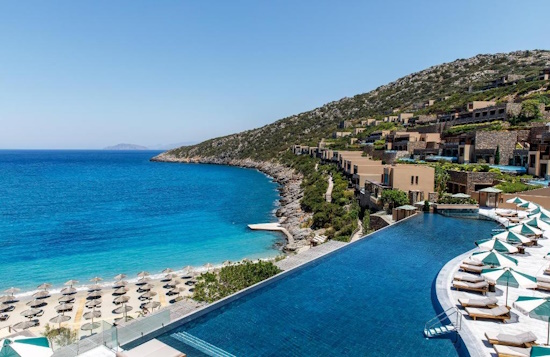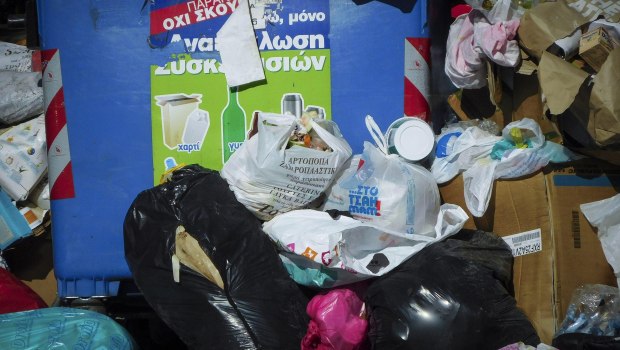For the first time after 571 years, the 1st Grade of the Secondary School of the Great Sch
Source: ProtoThema English
Every year, September 12 is traditionally a joyful anniversary for the Great School of the Nation. The oldest Greek school in the world, in uninterrupted operation almost since the day after the Fall of Constantinople in 1454 until today, commemorates the inauguration of the building with the characteristic red color where it has been housed since 1882. This year, however, the anniversary is overshadowed by the confirmation that the future of the famous School is more than gloomy. In fact, the news that there was not a single new student in the 1st Grade of the Secondary School for the new academic year is tantamount to sealing its end. After 571 consecutive years of operation, through fire and sword for nearly six centuries, with a line of brilliant minds who taught and studied there, for the Great School of the Nation the question is no longer if, but only when it will be forced to close permanently.
Its operation is in danger
On September 1, the two permanent supporters of the School, the Association of Alumni of the Great School and the Association of Friends of the Patriarchal Great School of the Nation, issued a joint statement in a dramatic tone:
“With extremely grave concern we were informed by Mr. Dimitris Zotos, director of the School, that the downward course of this prominent educational institution continues, reaching this year the extreme point of having no new registration in the 1st Grade of the Secondary School. In a letter sent by Mr. Zotos to the competent authorities, the causes of this unprecedented phenomenon are outlined, in contrast to the other Greek schools of Constantinople, and proposals are submitted in order to overcome the very serious risk of cessation of operation of the oldest educational institution of Hellenism worldwide.”

The School’s vast halls now fill only when the Greeks of the City hold some celebratory event.
The two bodies, deeply alarmed by the developments in Constantinople, describe the danger of the School’s closure after 571 years of fruitful operation as “a disgrace for Hellenism.” The demographic collapse of the Greek inhabitants of Constantinople is the obvious, instinctive explanation for the decline of the Great School of the Nation. Today it has about 30 students, with only 4–5 graduates per year, while teachers often teach in huge classrooms to just a single child. However, headmaster Dimitris Zotos, beyond the obvious cause, highlights in his letter to the Greek consulate in Constantinople and other stakeholders another serious problem, entirely different in nature from the dwindling Greek presence.

He refers to a rather unfair competition among the Greek minority schools of the City:
“In the last 20 years a particularly worrying phenomenon has undermined the School’s viability: children from Greek families who settle in Constantinople are directed almost systematically to other schools, depriving the Great School of the Nation of the necessary student body that would secure its uninterrupted continuation. The informal agreement reached in 2017 between the directors of the three historic schools (Great School, Zappeion, Zografeion) for balanced distribution of students and the safeguarding of all three institutions’ operation, unfortunately, was implemented for only one year. Its abandonment led to a disproportionate decrease in the student numbers of the Great School, which this year risks operating with fewer than 30 students.”
The Turks would save it
The fundamental paradox regarding the existence of the Great School of the Nation is embedded in its very identity: as a minority educational institution, it admits only students of Greek origin. Yet there is interest from many purely Turkish families, who are willing to enroll their children in the legendary “Red School” of Phanar (or “Fener” in Turkish). However, the minority status of the School a priori excludes the acceptance of Turkish students — something that, if it were allowed, would save the School, but at the same time prove disastrous, as the School would entirely abandon its centuries-old Greek character.
Given that the Greek population in Constantinople is steadily declining, the student body of the Great School shrinks proportionally and inexorably. The trajectory appears to be heading inevitably toward absolute zero — both for the Greeks of Constantinople in general, now numbering only 1,500–2,000 people, and for their children who might have attended the historic Secondary and High School of Phanar. From a demographic standpoint, the fact that this year there was not a single new registration in the 1st Grade constitutes a sad yet clear omen of the preordained fate of Hellenism in Constantinople.

Phanar, 1930. Young students pose in front of the Great School of the Nation.
In an interview in 2023, when the number of students was still 41 instead of today’s 33, headmaster Zotos explained to a Turkish outlet:
“Since the Great School of the Nation is a minority school, we must operate strictly within the framework of international treaties and based on the protocols signed between Greece and Turkey. In that sense, we cannot admit any student who does not belong to the Greek minority, despite the applications we receive — mostly from parents who value the high quality of education here, combined with the very small class sizes. Another significant factor is the high success rate of our students, who continue to higher education. Most of them, notably, choose Turkish universities, as it is evident that our children, at least in the last 25–30 years, do not go abroad for studies. There are also those who are interested in learning Greek, in addition to Turkish and English, which are the languages used for teaching here. Unfortunately, we cannot satisfy these requests.”
Mr. Zotos further emphasizes that the School building is enormous, with very large classrooms, precisely because it was designed to host hundreds of students. In September 1882, at its inauguration, the School had 731 children — all boys at that time — enrolled. In 1960, when the bloody wave of violence against the Greeks of Constantinople erupted, it was reduced to 450 students. Today, it has more than ten times fewer.
“There is nothing we can do to reverse this demographic decline,” observes Zotos, stressing that “if we want to keep minority schools alive in Turkey, such as the Great School of the Nation, certain criteria must be relaxed. The governments of Greece and Turkey must provide a solution.”
When asked whether he would accept children from other minorities besides the Greek one, Zotos does not hesitate to answer:
“Why not? We are educators. Our mission is to teach children, so it would be wonderful if we could address more students. Of course, everything depends on intergovernmental negotiations between Greece and Turkey.”
Comprehensive education
Regarding the educational program itself, the Great School of the Nation covers all subjects required by the Turkish Ministry of Education, plus Greek and English. Additionally, honoring its unparalleled tradition of excellence, the School remains in tune with the spirit of the times — hence since last year, students have been introduced to Artificial Intelligence and robotics, while all STEM courses are taught in Greek. In practice, about 70% of the curriculum is in Greek, while only the absolutely required courses are taught in Turkish.

Headmaster Zotos and the School’s board emphasize its prestige as one of Turkey’s top schools in terms of education quality. Still, Zotos admits that the program may be too demanding, especially for the four-year High School. Compared with the prevailing Western trend of reducing subjects, the School insists on the older vision of comprehensive, humanistic, and scientific education, in the spirit of the Enlightenment. The curriculum ranges from Physics and Astronomy to Philosophy, Religious Studies, Civics, etc. But Greek History is excluded, as stipulated by bilateral agreements on minority schools, where only local and world history are taught.
SOS for Hellenism
Nevertheless, Zotos stresses the essential role of the Great School as a vessel of Hellenism in Turkey. Speaking to ERT he said:
“Beyond our duties as teachers, we Greeks of Constantinople have a huge responsibility to ensure that children learn who we are, what we went through, why we are here — and why we must continue. It is up to us to instill in students a Greek consciousness. Because Greek identity entails responsibilities. We represent a culture that created the concepts of democracy, science, and justice. We consider Greece our homeland and love it. But our homeland is also here, the country where we live, Turkey. So our children must know that they need to live with their fellow citizens here, without negative feelings. Every child must love the country they are in, because we were born here.
However, Greekness is very important, because all the stimuli around us in Constantinople today are in Turkish. It is not like the times of our fathers and grandfathers, when everything around them was Greek. There were neighborhoods with only Greeks, and people didn’t even feel the need to speak Turkish. Things have changed now. And within this vast society, we must preserve our identity. It is crucial to keep our language, our traditions, and our schools alive.”
Ask me anything
Explore related questions
The original article: belongs to ProtoThema English .



